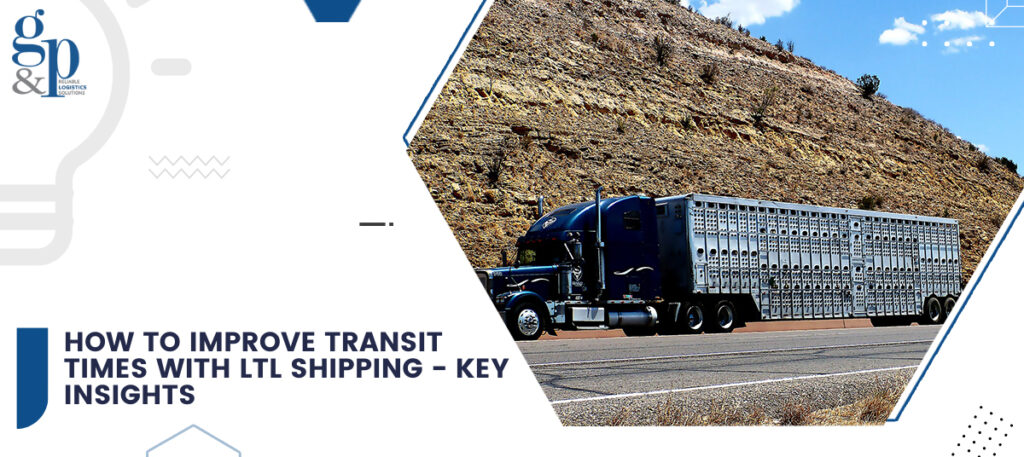How to Improve Transit Times with LTL shipping – Key Insights

The year 2020 has led the transportation sector to face disruption unlike earlier years.
Less-than-truckload or some we might call as LTL freight shipping is a mode of transportation option which is considered cost-efficient by many small businesses and mid-size businesses. But due to COVID-19, even the less than truckload (LTL) marketplace had had to face challenges in this times, especially affecting the transit times.
We all know that LTL, most of the times, takes longer transit times than FTL shipping. A well balanced budget is crucial to the business operations.
It’s often challenging for the shippers to recognize the opportunities for optimizing, improving, and boosting LTL freight performance.
With the above facts in mind, it’s obvious why LTL shipping is considered to be a slower mode of shipping. All the switching of hands, deconsolidation and reconsolidation of cargo can cause transit times to multiply quickly.
However, there are several ways to improve LTL transit times that we will explore here. With this information, you will see your on-time delivery, a crucial LTL key performance indicator, begin to improve.
Plan For Longer Transit Times
This isn’t necessarily a point on how to improve transit times as much as it is to help manage your expectations and planning phase.
LTL is so unpredictable, and especially with the market these days (high demand, overbooked carriers, high rates, congestions, etc.), it’s smart to plan extra time in the transit process. Expect to add anywhere from 1-3 extra days to your carriers expected LTL transit times. It will help you to prepare earlier and keep your customer from experiencing frustration when things don’t arrive exactly when expected.
Get accurate on tender details
There are many reasons why LTL carriers should know what the actual shipment weights and cube are up front. A big one is that inaccurate information about shipment characteristics often leads to shipment delays.
LTL carriers plan multiple-pick loads based on the tendered information and/or historical experience. If you underestimate pallet counts or shipment weight, you’re more likely to have your pick missed because the carrier wasn’t able to properly plan for the space needed on the trailer. Keep in mind, accurate information also includes any special requirements; they can plan pickup routes more effectively with this information available up front.
Use expedited shipping
Expedited shipping is a special service when freight is delivered faster than regular transit times. The freight is delivered within a tight deadline through the dedicated equipment. The principal difference between standard and expedited shipping is much shorter transit times and fewer touchpoints during transportation. Usually, expedited shipping takes 1-2 business days, but these transit times may vary depending on the carrier, lane, and destination. PLS Logistics Services can arrange your freight shipment regardless of its size and distance. Our experienced freight brokers will provide professional help so you can be sure that shipment arrives safely and on time.
Keep Updated with Industry News
Staying current with industry news isn’t just a leisure activity for nerds who just love the freight industry. Being informed on what is going on in the world as it relates to logistics – both globally and domestically – is super important for understanding how your cargo should be handled.
Staying up to date on industry news will help you better understand market conditions including blocked roads, weather conditions, carrier strikes, major economic events, and port congestion which can all be major factors in changing the routing or handling of your LTL shipments. You need to be in the know on what’s going on.
Find a freight forwarder who is incredibly knowledgeable about both the LTL industry as a whole as well as general market conditions and industry news. Staying informed and working with a freight forwarder who is informed on industry news helps to clear blind spots and keep you from making avoidable mistakes.
Back To Blogs